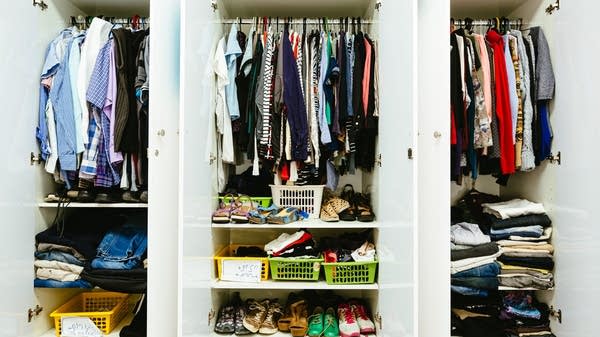Could slow-moving sleeper trains catch on in the U.S.?
A private company is envisioning something like a hotel on wheels to connect Los Angeles and San Francisco.

A project that would connect the Bay Area and Los Angeles by high-speed rail is still years away from completion and billions of dollars over budget. President Donald Trump’s recent threat to pull federal funding from the effort (and efforts in Texas too) could slow it down even more.
But a private company thinks there’s another way to link the two cities by rail: slow-moving sleeper trains.
The idea is to offer something like a hotel on wheels, according to Joshua Dominic, the CEO of a startup called Dreamstar Lines.
“An overnight sleeper train allows you to board the train in the evening, sleep overnight, and wake up in the morning in your destination refreshed,” he said.
A more comfortable red eye, he said — complete with beds and showers on board.
Overnight trains are seeing something of a revival in Europe; both private and public rail companies have expanded service there in recent years.
Amtrak already offers sleeper compartments for long-distance trains in the U.S., say, New York to Chicago. But Dominic thinks there’s an opportunity for the private sector too, running sleeper trains on existing freight rail tracks.
“We can use some of the capacity that currently exists in America's rail infrastructure that's just being really underutilized and making it more useful,” he said.
His first target is between San Francisco and LA. He’s already negotiating with Union Pacific to use the freight company’s tracks.
Dreamstar isn’t the only company pursuing this idea. Another, Philadelphia-based Lunatrain, has proposed a network of sleeper lines in the East and Midwest. The company declined an interview request.
These companies could be onto something, according to Robert Puentes, vice president and director of Brookings Metro.
“If you're saving money on a hotel, if you're traveling at night when there's theoretically very little traffic, it's a very intriguing idea,” he said.
The challenge, he acknowledged, is actually making money on this.
The biggest private passenger rail company in the U.S. right now is called Brightline and runs a train in Florida, but it also owns a lot of real estate around its stations. Those developments have bolstered the company’s finances, Puentes said. Those overnight startups don’t have real estate portfolios to draw from.
“The idea of providing service and making money off of just passenger fares is a very interesting one and an intriguing one, thinking, well, how high do the fares have to be in order for them to generate returns?” Puentes said.
Joshua Dominic at Dreamstar said he intends for his sleeper train fares to be comparable to the cost of a flight plus a hotel room.
The other challenge is getting the trains themselves, said Sean Jeans-Gail, vice president of policy and government affairs at the Rail Passengers Association.
“Right now, you're looking at a 10 to 12-year lead time from when you order the equipment to when it rolls off the manufacturing line and is ready to go into revenue service,” he said.
Dreamstar’s Joshua Dominic said he’s identified used trains that his company could retrofit but declined to offer any more specifics. And he said he has private investors lined up to back his company.
The goal? Have sleeper trains running between LA and the Bay Area by the 2028 Olympics. And — within a few decades, Dominic said — a network of them across the country.





!["[New York City] is a town with a lot of people who work overnight and work late nights, and they're buying Christmas trees too," said June Hagin, who works at Uptown Christmas Trees in West Harlem.](https://img.apmcdn.org/4c30cbda1f1968e486d7b7b3c37b6583768840ff/widescreen/ac8cc3-20251217-a-person-carries-a-christmas-tree-600.jpg)







